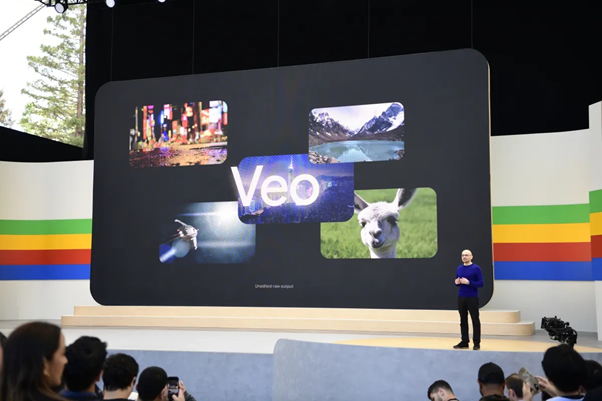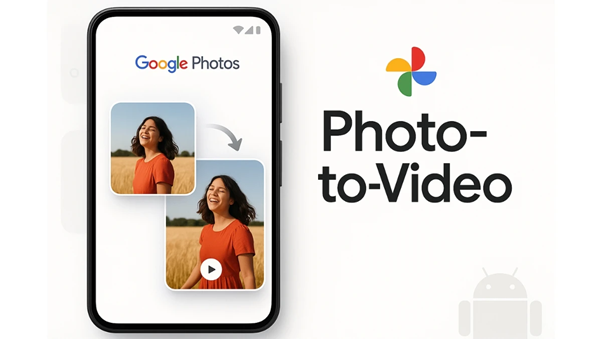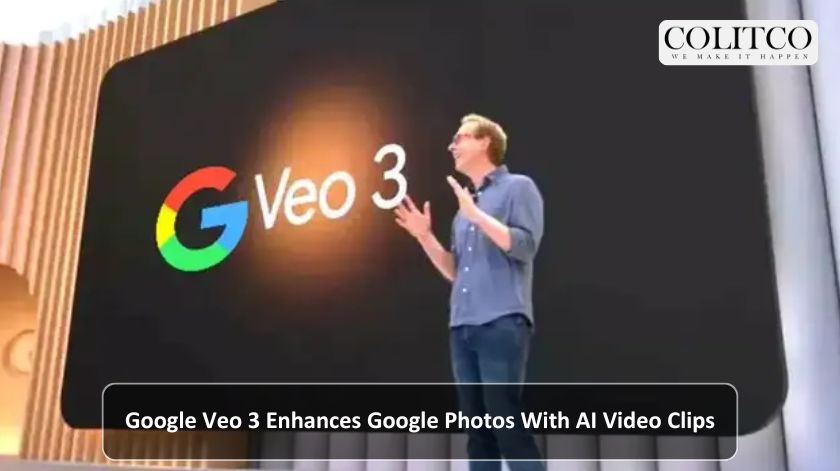Google’s newest video-generation model, Google Veo 3, is now in Google Photos. The update resides inside the Create tab of the app. The program allows American users to transform still pictures into short clips.
Before, it had a video-making rule: “Photo to video.” But Google Veo 3 makes way for higher-quality outputs. It’s an illustration of AI efficacy being embedded within consumer products at Google. Having 1.5 billion-plus monthly active users recorded in May 2025, Google Photos presents a gigantic testing environment for such use cases.
Google is hoping users go on to animate older photos or bring new memories to life. So, with moving clips, Google adds yet another option for personalising their photo service.

Google adds Veo 3 to Photos, letting US users turn images into video clips
How Did Google Veo 3 First Appear?
Google Veo 3 was first unveiled at the Google I/O developer conference in May. By July, it also remained the core visual aspect of the Gemini app, offered under subscriptions such as AI Ultra and AI Pro. Subscribers could create three videos each day.
The clips would get watermarked in two ways: visibly and invisibly. This early launch was beneficial for Google’s furthering of the technology before embedding it into Google Photos.
Receiving this technology finally in Google Photos is much more of a consumer-level feature than a subscription-based service. Premium subscription plans shall continue to provide more features, while free usage opens this tool to millions.
What Features Does The Google Image-To-Video Feature Include?
In the past, Google Photos used Veo 2 for what was called an image-to-video feature. The user picked a photo and had the option to select prompts for something called subtle movements or animations via the “I’m feeling lucky” button. The model would generate six-second clips for the curation process.
With the current Google Veo 3, the new updates are as follows: Free users get a limited number of generations, while AI Pro and AI Ultra subscribers can enjoy more clips. The videos, however, are now four seconds long and do not support audio.
The stress is on fun experimentation, not full production video, designed for telling your own stories rather than editing professionally.

Google Photos’ earlier Veo 2 tool offered six-second animated clips with subtle movement options
Google’s Video-Generation Expands Creative Possibilities
Now the Create hub in Google Photos aims to be a centre for AI-powered creativity. Besides Google Veo 3, it provides remix options for tweaking photo styles, montage makers, collage builders, and cinematic 3D photos. The GIF-generator further adds to the diversity of the output types.
By confining all the features to one place, Google encourages users to experiment with the AI media tools. This, therefore, helps in gaining traction while keeping away from the user away from other big tech ecosystems.
In the view of other commentators, the generation of video is viewed as one way of opening up consumer AI uses. Google developers used to keep the GAN technology for themselves; now the company integrates it into everyday apps. Such a strategy may enhance loyalty among its global users.
How Does Google Balance Free And Paid Access?
Google is providing Google Veo 3 with a hybrid access model. Free users enjoy limited generations. More are unlocked by AI Pro and AI Ultra subscribers.
Such a structure is much like other GAN tools Google runs, creating a balance of accessibility against the opportunities for revenue. The free tier casts a wide net, driving mass adoption. Paid subscriptions then capitalise on the demand of heavy users.
Consequently, the model may sprout further premium signups, especially in creative circles. For the casual user, however, even free-time access creates an initial curiosity.
Google Veo 3 Signals A Shift In Consumer AI Adoption
The integration of Google Veo 3 into Google Photos emphasises a larger change. AI has moved from experimental apps into platforms used in everyday life. It means advanced AI capabilities are available to billions of people without any formal training.
With personal memories being targeted, Google forges strong emotional ties with its tools. People will be much more willing to try AI when it brings a family photo or a holiday to life. Such a personal touch should accelerate the mainstream adoption of AI-driven creativity.
Generally, Google’s bigger challenge is to create transparency. Watermarks, both visible and invisible, still need to be placed for these clips to be distinguished as AI-generated. The greater and better the means for video-generation become at Google so also does the greater the need for ethical safeguards.
Also Read: Google Unveils Pixel Care+ Device Protection
FAQs
Q.1. What is Google Veo 3?
Google Veo 3 is the newest AI generation video model from Google and is now inside Google Photos.
Q.2. How does the image-to-video feature of Google work?
It allows an image with no motion to be animated into short four-second video clips using AI.
Q.3. Is Google Veo 3 a free service?
Yes, though usage is limited. More access is provided to AI Pro and AI Ultra subscribers.
Q.4. Does Google Veo 3 support sound?
Right now, the version in Google Photos does not support audio.












